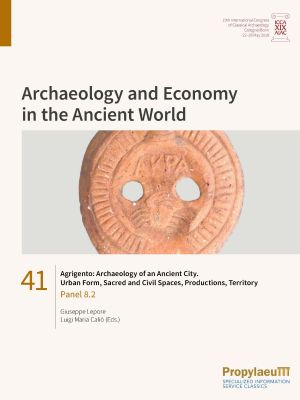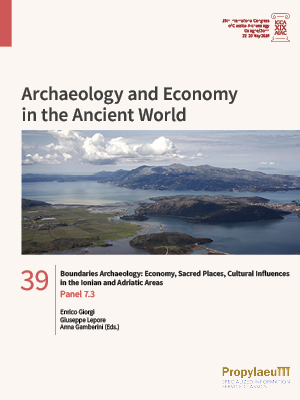Lepore, Giuseppe
Agrigento: Archaeology of an Ancient City. Urban Form, Sacred and Civil Spaces, Productions, Territory: Panel 8.2
The archaeological research in Agrigento has undergone a new and important impulse thanks to a new collaboration between the Archaeological Park "Valley of the Temples" and many Italian and European universities, who have worked side by side on shared projects and excavations. This volume aims to be a synthesis of the most recent research carried out in the various sectors of the ancient city, but also a testimony of a correct way of proceeding, in which different universities and management, protection and research structures actively collaborate in the search for a common vision of such an important city of Antiquity as Agrigento, which, until a few years ago was isolated and little known in the research community, except for the famous Hill of the Temples. Agrigento now displays an unprecedented richness in archaeological research: the various aspects of the social, architectural and economic life of the ancient city now emerge with greater clarity, as well as the urban spaces, its sanctuaries, housing estates, production sites, but also the agricultural management of the chora and the extra-urban territory in an overall vision of the city which, although still partly incomplete, produces one of the few complex syntheses of the life of a city in ancient Sicily.
Boundaries Archaeology: Economy, Sacred Places, Cultural Influences in the Ionian and Adriatic Areas: Panel 7.3
The territories of the Adriatic and the Ionian area were separated from each other both from a political and a cultural point of view. Because of this circumstance, they represent a suitable area for the study of commercial and cultural exchange. This meeting of cultures generated mutual influences and cultural osmosis in various ways and at different times, and was linked to different historical and geographical contexts, which nevertheless sometimes generated similar results. Recent archaeological research allows us to assume that sanctuaries and sacred places are suitable contexts in which these phenomena can be analysed, as they were places in which large amounts of people gathered and centres of cultural mediation that were involved in economic and political interests.
The contributions collected in this book consider these issues from different points of view and include studies on historiography, material culture and numismatics. The case studies of the northern Adriatic area are located on the western shore, and in particular in the area of the ager Gallicus and of Picenum, with a particular focus on the period that precedes and witnesses the structuring of the Roman domination of this territory (3rd / 2nd century BC). The case studies in the southern Adriatic and Ionian area focus on Apulia and the area of Illyria and Epirus between the Archaic era and the beginning of the Roman age (4thto 1st century BC).








